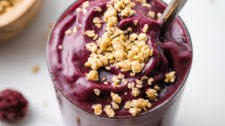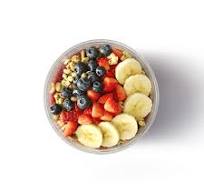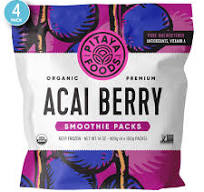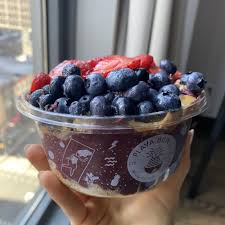Exploring the Acai Bar Craze: A Delicious and Nutritious Trend
The Rise of Acai Bars: A Healthy Trend
In recent years, acai bars have been popping up all over the country, offering a delicious and nutritious alternative to traditional fast food options. The acai berry, native to the Amazon rainforest, has gained popularity for its numerous health benefits and unique flavor profile.
One of the key reasons for the surge in popularity of acai bars is the growing interest in healthy eating and wellness. Acai berries are packed with antioxidants, fiber, and heart-healthy fats, making them a superfood that appeals to health-conscious consumers.
At acai bars, customers can enjoy a variety of acai bowls and smoothies that are not only delicious but also visually appealing. Topped with fresh fruits, nuts, seeds, and granola, these bowls are not only satisfying but also Instagram-worthy.
Another factor contributing to the success of acai bars is their accessibility. With many people looking for quick and convenient meal options, acai bars provide a healthy alternative that can be enjoyed on the go.
As more people become aware of the benefits of incorporating superfoods like acai berries into their diet, the popularity of acai bars is expected to continue growing. So next time you’re looking for a tasty and nutritious treat, consider stopping by an acai bar to experience this healthy trend for yourself!
9 Reasons to Enjoy Acai Bars: A Delicious, Nutritious Boost for Your Health and Lifestyle
- Rich in antioxidants that help boost immune system
- High in fiber, aiding digestion and promoting gut health
- Contains heart-healthy fats that support cardiovascular health
- Provides a natural energy boost without the crash of caffeine
- Offers a delicious and refreshing option for a healthy snack or meal
- Customizable with a variety of toppings like fruits, nuts, and seeds
- Convenient for on-the-go consumption for busy individuals
- Promotes overall well-being and supports a healthy lifestyle
- Can be enjoyed guilt-free as part of a balanced diet
Considerations Before Choosing an Acai Bar: Cost, Menu Limitations, Sugar Content, and Accessibility
- Cost can be higher compared to traditional fast food options.
- Limited menu options for individuals with dietary restrictions or preferences.
- Potential for added sugars and high-calorie toppings in acai bowls.
- May not be as readily available in all areas, limiting accessibility.
Rich in antioxidants that help boost immune system
Acai bars offer a significant health benefit by being rich in antioxidants that can help boost the immune system. Antioxidants play a crucial role in protecting the body against harmful free radicals and reducing inflammation, ultimately supporting overall immune function. By incorporating acai berries into their diet through acai bowls and smoothies, customers can enjoy not only a delicious treat but also a natural way to strengthen their immune system and promote long-term health.
High in fiber, aiding digestion and promoting gut health
Acai bars are a fantastic choice for promoting gut health due to their high fiber content. Fiber plays a crucial role in aiding digestion and maintaining a healthy gut microbiome. By incorporating acai bowls or smoothies into your diet, you can support your digestive system and overall well-being, making it easier to maintain a balanced and healthy lifestyle.
Contains heart-healthy fats that support cardiovascular health
Acai bars offer a significant health benefit by containing heart-healthy fats that support cardiovascular health. The acai berry is rich in monounsaturated fats, such as omega-9 fatty acids, which have been shown to help lower bad cholesterol levels and reduce the risk of heart disease. By incorporating acai bowls or smoothies into your diet, you can enjoy a delicious treat while also promoting a healthy heart and overall well-being.
Provides a natural energy boost without the crash of caffeine
Acai bars offer a unique advantage by providing a natural energy boost without the crash often associated with caffeine consumption. The natural sugars and antioxidants found in acai berries help to increase energy levels in a sustained manner, making it an ideal choice for those looking for a healthier alternative to caffeine-based drinks. By enjoying an acai bowl or smoothie, individuals can experience increased vitality and focus without the jitters or subsequent energy slump that often follows caffeine consumption.
Offers a delicious and refreshing option for a healthy snack or meal
Acai bars offer a delightful and invigorating choice for a nutritious snack or meal. With their refreshing acai bowls and smoothies bursting with flavor, they provide a satisfying and healthy alternative that is perfect for any time of day. Whether you’re looking for a quick pick-me-up or a fulfilling meal, indulging in the delicious offerings at an acai bar is sure to leave you feeling energized and nourished.
Customizable with a variety of toppings like fruits, nuts, and seeds
A standout feature of acai bars is their customizable nature, allowing customers to create their perfect bowl or smoothie by choosing from a variety of toppings such as fresh fruits, nuts, and seeds. This level of personalization not only enhances the visual appeal of the dish but also caters to individual taste preferences and dietary needs. Whether you prefer a tropical medley of fruits or a crunchy mix of nuts and seeds, the ability to customize your acai creation ensures a satisfying and unique culinary experience with every visit.
Convenient for on-the-go consumption for busy individuals
Acai bars offer a convenient solution for busy individuals looking for a quick and healthy meal option while on-the-go. With their portable acai bowls and smoothies, packed with nutritious ingredients like fruits, nuts, seeds, and granola, acai bars cater to the needs of those with busy schedules who still want to prioritize their health. Whether heading to work, running errands, or squeezing in a workout, grabbing a delicious and nourishing acai bowl from an acai bar is a convenient way for busy individuals to stay energized and fueled throughout the day.
Promotes overall well-being and supports a healthy lifestyle
Acai bars promote overall well-being and support a healthy lifestyle by offering nutrient-rich acai bowls and smoothies that are packed with antioxidants, fiber, and essential nutrients. Consuming acai regularly can help boost energy levels, improve digestion, and strengthen the immune system. By incorporating acai into their diet, individuals can enhance their overall health and well-being, making it easier to maintain a balanced and healthy lifestyle.
Can be enjoyed guilt-free as part of a balanced diet
Acai bars offer a guilt-free indulgence as part of a balanced diet. Packed with antioxidants, fiber, and essential nutrients, acai bowls and smoothies provide a delicious way to satisfy cravings while nourishing the body. Enjoying an acai treat allows individuals to treat themselves without compromising their commitment to healthy eating, making it a satisfying and wholesome choice for those seeking balance in their diet.
Cost can be higher compared to traditional fast food options.
One downside of acai bars is that the cost can be higher compared to traditional fast food options. Due to the use of high-quality ingredients such as fresh acai berries, premium toppings, and superfood add-ons, the prices at acai bars may be perceived as more expensive. While the nutritional value and health benefits of acai bowls justify the higher cost for many health-conscious consumers, it may deter others who are looking for more budget-friendly meal options.
Limited menu options for individuals with dietary restrictions or preferences.
One drawback of acai bars is the limited menu options available for individuals with dietary restrictions or preferences. While acai bowls and smoothies are generally considered healthy choices, those with specific dietary needs, such as gluten-free, vegan, or nut allergies, may find it challenging to find suitable options at traditional acai bars. This limitation can be frustrating for customers who are looking for customized or specialized menu items to accommodate their dietary requirements.
Potential for added sugars and high-calorie toppings in acai bowls.
One downside of acai bars is the potential for added sugars and high-calorie toppings in acai bowls. While acai itself is a nutritious superfood, the health benefits can be overshadowed by the addition of sugary syrups, sweetened granola, and high-calorie toppings like coconut flakes and chocolate chips. These extras can significantly increase the calorie and sugar content of an otherwise healthy dish, making it important for consumers to be mindful of their choices when customizing their acai bowls to ensure they are still getting a balanced and nutritious meal.
May not be as readily available in all areas, limiting accessibility.
One potential drawback of acai bars is that they may not be as readily available in all areas, which can limit accessibility for those living in regions where acai bars are not yet established. This lack of availability could prevent some individuals from enjoying the health benefits and delicious flavors of acai bowls and smoothies, potentially excluding them from experiencing this popular health food trend.




